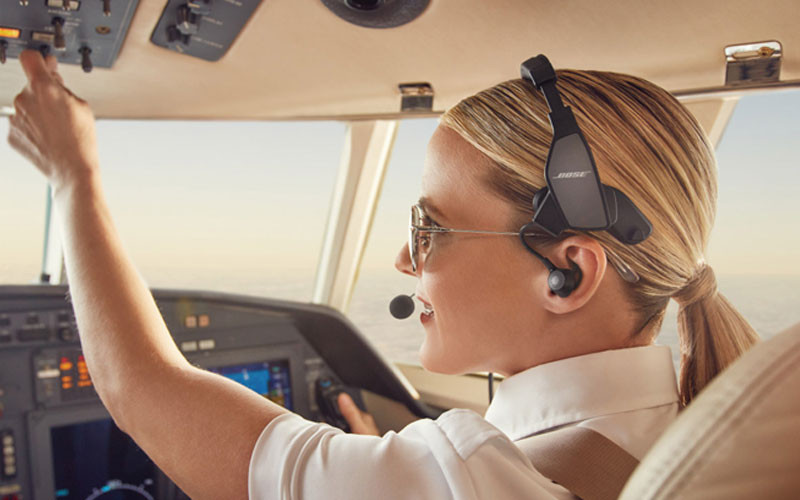Posted by Katie A. on May 9th 2022
Customers often ask us to recommend a headset. In order to help a customer find the perfect headset there are a few questions that need to be answered.
The first question that we ask is whether you have heard of active noise reduction (ANR) technology? It is important to figure out if you want an active headset or a passive headset. Active noise reduction is an enhanced noise reduction technology that uses an electronic signal in the ear cup to cancel certain background noise. This results in a quieter overall listening experience. ANR is said to save the pilot’s hearing over time and it also reduces fatigue in the cockpit. Passive headsets cancel out noise due to the seal of the ear cup against the head. There is no electronic signal to cancel out any noise, so more noise gets in, especially when the seal is disrupted due to sunglasses or prescription glasses. Passive headsets are normally less expensive and typically are used for initial training. The pilot may choose to upgrade to an ANR headset when he or she achieves a new rating or accepting a new flying job. At the same time, many pilots have the initial budget to purchase an ANR headset from the outset.
The next question we ask is the type of aircraft flown. We have headsets for piston engines as well as jet engines and some headsets are only appropriate for their specific function. For example, a Boeing 737 pilot would probably not want a passive headset due to the immense amount of noise in the cockpit. Pilots in piston aircraft would not want a passive professional headset that sits on top of the ear as opposed to around the ear. Professional pilots are more likely to use smaller, lightweight ANR headsets to carry in their flight bags. These headsets range from in-ear, to on-ear, to over the ear. Piston pilots would want headsets that have the best noise cancelling technology because their cockpits are also proven to be loud. There are very few headsets that would work as an in-ear headset for a piston pilot. The way the headset is being used as well as the frequency of use is imperative in the decision.
Pilots in training will wear the headset probably 2-4 hours a day depending on the length of their flight. Professional pilots normally wear their headsets for a lot longer than that! Comfort is really the key to a good headset. You could love the headset in the box but you’re going to be wearing it for a period of time so you have to make sure you can stand to wear it. The headset has to sit comfortably on your head and any clamping or pressure is not a good sign. You should make sure the headset is not too heavy to carry around in your flight bag in case you have to haul it around the airport. Making sure the headset is comfortable is the most important aspect of choosing a headset.
The last thing we always check to see is what kind of capability you want the headset to have. Sometimes this is determined by price range as well. Some of the more expensive ANR headsets have Bluetooth capability so you can link your cell phone and play music. They then have the option to mute the music so the call from ATC comes through clearly. Another very important use for Bluetooth functionality is pairing it to a tablet with an ADS-B in solution. That provides traffic alerts that annunciate in your earcup. Traffic warnings don't do much good if you are not aware of them!
Other headsets that are not as expensive still provide an option for streaming music. They might require an auxiliary cord that would link to your phone. Music streaming is helpful to some pilots to pass the time on long flights. It is okay for student or training pilots to get a Bluetooth or music capable headset, too, because most likely they will not be a student pilot forever. The technology that has come out in recent years is making headsets more efficient and easier to use than ever before. A headset is a very personal item among each pilot so what works for you may not work for your fellow pilots. Finding a headset that is your perfect fit might be challenging but we’re here to help you make the best decision! Just give us a call at 800-348-0014. You can also look at our Headset Buying Guide!

